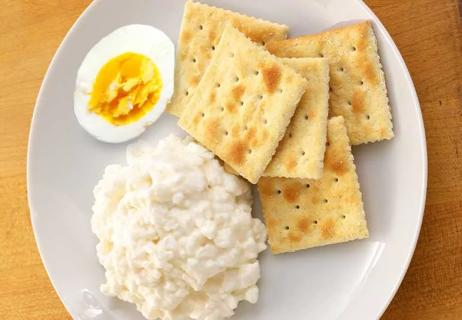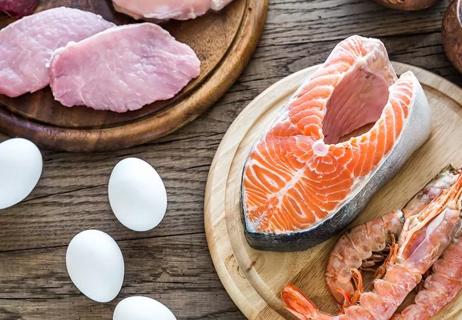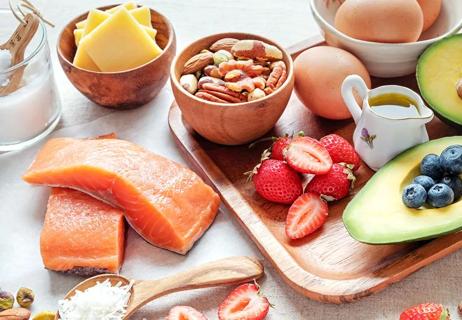We break down the Atkins, ketogenic, GOLO, Military and Taco diets

Contributor: Brigid Titgemeier, MS, RDN, LD
Advertisement
Cleveland Clinic is a non-profit academic medical center. Advertising on our site helps support our mission. We do not endorse non-Cleveland Clinic products or services. Policy
So many of us jump on the latest diet bandwagon. Yet time and time again, diets fail us.
That’s because the only way to succeed with a diet is to find one that works for you, personally. Nutrition never was, and never will, be “one size fits all.”
Bear that in mind in this review of the most-searched-for diets on Google in 2016. They’re ranked from the most well-researched to the least to help you make an informed decision about trying them:
The Atkins 20 is an effective weight loss plan. Studies have shown that this type of lower carbohydrate diet may improve control of type 2 diabetes, seizures and other neurological conditions.
The Atkins 40 is essentially a less restrictive version of the Atkins 20 and a ketogenic diet (explained below). The plan, advertised as an easy low-carb diet, promotes counting net carbohydrates (total carbs minus dietary fiber and sugar alcohols). It allows 40 grams of net carbohydrates per day and is intended for those with less than 40 pounds to lose.
On the Atkins 40, you choose 15 grams of net carbohydrates from high-fiber vegetables and use the remaining 25 grams for Greek yogurt, fruit, nuts, whole grains and legumes. As you get closer to your goal weight, you slowly incorporate more net carbohydrates.
Advertisement
The benefits of the Atkins 40 are that it encourages plenty of vegetables, nutrient-dense carbohydrates and portion control. It also allows for variety. You can choose how to use your net carbohydrates and change things up each day.
Finally, the Atkins 40 promotes balanced meals that focus on protein, fats and carbohydrates.
Unlike the other diets on this list, the benefits of lower carbohydrate diets such as the Atkins and ketogenic diets are backed by validated research studies, published in medical journals.
The ketogenic diet is a stringent nutrition plan that’s high in fat, moderate to low in protein, and very low in carbohydrate. On it, you choose different ratios of fat to protein and carbohydrate. The strictest ratio is 4:1 (90 percent fat, 8 percent protein, 2 percent carbohydrate).
You can look at any diet with less than 10 percent carbohydrates (20 to 50 grams per day) as a low-carb ketogenic diet. The idea is that restricting carbohydrates reduces insulin levels and fat accumulation.
After a few days on the diet, decreased carbohydrate reserves can no longer fuel your central nervous system, and the liver responds by producing ketone bodies from fatty acids. The process is called ketogenesis (thus the name ketogenic diet).
Not solely used for weight loss, the ketogenic diet has been around since the time of Hippocrates, when it was used to help manage epilepsy. Since then, research has suggested that ketogenic diets can reduce food cravings and may benefit people with obesity, insulin resistance and type 2 diabetes.
While new studies suggest that high-fat ketogenic diets may benefit people with Alzheimer’s disease, Parkinson’s disease and cancer, further research is needed.
For some people, a ketogenic diet can be taxing on the liver and the kidneys, and may cause constipation. So if you’re interested in a ketogenic diet, be sure to discuss it with your doctor or a dietitian first.
Also, it’s easy to follow an unhealthy version of the ketogenic diet. Don’t choose unhealthy fats, such as processed and factory-farmed meats, high-fat dairy products, and partially hydrogenated oils.
For optimal results, you’ll want to focus on high-quality fats, such as extra virgin olive oil, avocado oil, coconut oil, etc.
The GOLO® program seeks to stabilize insulin levels and blood sugars, a concept supported by the latest research. The company claims that controlling insulin is more effective than counting calories.
Advertisement
For many people, insulin and blood sugar levels do in fact contribute to weight change. Eating refined carbs (like white bread and pasta) causes blood sugar levels to spike quickly, which can lead to more production of insulin. Insulin is a fat-storing hormone used to transport sugar from the bloodstream into cells.
Although the program has a good understanding of the link between insulin resistance and weight gain (especially belly fat), it does not appear to be validated by substantial research. In the claims made on the website, the company does not reference any published research studies.
GOLO is promoted as an “all-inclusive plan” but doesn’t specify which foods are consumed, and it features images of white bread and pasta in advertising.
All participants are advised to use a supplement that includes banaba leaf, berberine HCl, chromium, apple polyphenol, salacia bark extract, gardenia fruit extract, rhodiola, inositol, zinc and magnesium.
While GOLO claims that 200 independent studies substantiate the supplement’s effectiveness, most of those studies look at ingredients individually and not in combination.
The Military Diet is a low-calorie weight loss program. It promises a 10-pound weight loss in three days or a 30-pound loss in one month “without strenuous exercise or expensive pills.”
Advertisement
The plan’s primary benefits are that it eliminates added sugars and non-nutritive sweeteners (with the exception of stevia). It also recommends preparing your own foods at home instead of eating out.
The Military Diet’s three greatest limitations are that it offers very little variety. it takes a low-calorie approach. That’s proven to set you up for increased hunger and cravings; and it does not focus on the quality of your calories.
For example, while the shopping list includes nutritious staples like apples, eggs and broccoli, it also includes vanilla ice cream, saltine crackers and hot dogs. One sample breakfast includes five saltines, one slice of cheddar cheese and one small apple. That’s a very small meal that lacks nutrient density.
A sample dinner the same night includes one cup of tuna, half a banana and one cup of vanilla ice cream. These portions are very small, may not leave you satisfied after the meal, and are very limited in variety.
This is the perfect example of why the quality of your calories matters so much more than the quantity. Saltines, vanilla ice cream and hot dogs should not be part of any nutrition plan.
The taco cleanse claims that eating tacos for 30 days is “proven to change your life.” This protocol was created by vegan “taco scientists” in Austin, Texas, and recommends eating one to two tacos at every meal, adding margaritas as necessary.
Advertisement
The taco diet does not seem to be substantiated by research, although the website claims that studies support its health benefits.
On the taco diet, you fill tortillas with beer-battered portobellos, macaroni and cheese, and tater tots. These are far from nutritious options!
Plenty of people can lose weight on a junk food diet but that does not mean that it’s the best option for overall health. Weight loss should be a side effect of any diet or nutrition plan. Diets should focus on creating health and decreasing inflammation. This does not seem to be the cause with the Taco Diet.
Learn more about our editorial process.
Advertisement

Extreme calorie restriction isn’t the way to long-term weight loss

This restrictive, rules-heavy diet can lead to micronutrient deficiencies, among other issues

The demanding plan eliminates dairy, grains and other common foods from your plate for 30 days

Learn how to properly identify what’s edible — and inedible — in the wild

Common culprits and pinpointing the cause of your food issues

The good and bad of this low-carb diet

When it comes to getting proper nutrition, your assigned sex can play a role — but there’s more to it than that

It has nutrients your body needs, but it also comes with some serious health risks

Type 2 diabetes isn’t inevitable with these dietary changes

Applying a hot or cold compress can help with pain